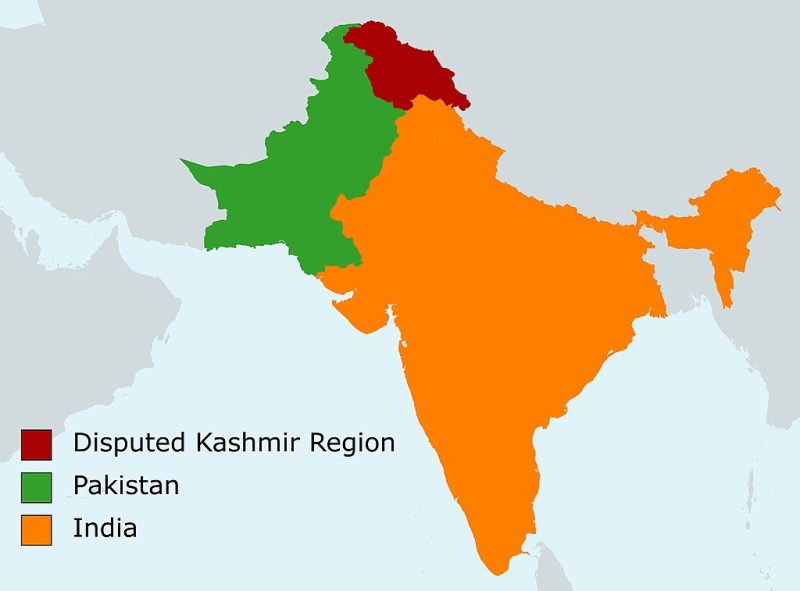Approaching the four-year milestone since India’s revocation of Article 370, Kashmir’s intricate situation continues to intertwine with cyber warfare, nuclear risks and ever-evolving geopolitical landscapes. This pivotal change, altering a 1949 agreement between Jawarharlal Nehru and Sheikh Mohammad Abdullah, remains a source of escalating tensions. However, Pakistan’s steadfast refusal to acknowledge this transformation underscores the contemporary complexities.
Labeling this date as “Youm-e-Istehsal-e-Kashmir” (The Day of the Exploitation of Kashmir), Pakistan’s Ambassador to Spain, Shujjat Ali Rathore, vehemently condemns India’s actions. He cites concerns about human rights violations and the potential for fresh confrontations between nuclear-armed neighbours. Against this backdrop, the delicate Kashmir region remains vulnerable to ignition, involving India, Pakistan, and China – all possessing nuclear capabilities and vested interests.
Since the tumultuous partition of British India in 1947, Kashmir’s status has remained contentious. The arbitrary demarcation by Cyril Radcliffe ignited the first Indo-Pakistani war, followed by subsequent conflicts. Despite territorial divisions, Pakistan remains resolute in its belief that Kashmir’s fate should be determined through self-determination – a principle challenged by India’s abrogation of Article 370.
Amid the looming spectre of nuclear conflict, the Pakistani ambassador highlights an asymmetry in conventional military capabilities. This disparity could tempt disadvantaged parties to resort to nuclear weapons, adding urgency to the situation. As Pakistan monitors India’s military advancements and strategic alliances, concerns mount about the international community’s focus on arms trade over human rights.
In the era of cyber warfare the conflict’s dynamics have expanded, impacting the present day. India strategically shapes a narrative of peace in the Indian Occupied Kashmir (IOK) through controlled communication channels. However, the Indian army’s shift towards targeting Kashmiri youth sheds light on the persistent human rights abuses that continue to unfold.
The post-revocation aftermath has transformed the conflict into a new phase, characterized as “Settler Colonialism.” The influx of non-Kashmiri settlers is altering demographics and cultural fabric, while foreign investments like the UAE’s Amman Group redefine the landscape. Pakistan’s call for global attention to the issue underscores the need for contemporary solutions to these multidimensional challenges.
In the current landscape, Pakistan must leverage diplomatic and economic ties to rally international engagement on the Kashmir issue. Amid the backdrop of nuclear threats and cyber complexities, finding a peaceful resolution takes on added urgency for the security and stability of the involved parties – India, Pakistan, China – and the Kashmiri populace.
In conclusion, the approaching anniversary of Article 370’s revocation serves as a reminder of the intertwined challenges facing Kashmir. With a focus on contemporary realities, including cyber warfare and nuclear risks, the need for peaceful solutions remains paramount. Pakistan’s efforts to bring international attention to the issue underscore the urgency of addressing this complex situation in the present day.
Amidst these complexities, it’s essential to recognize India’s commitment to regional stability and economic progress. While the Kashmir situation remains intricate, India’s advancements in technology, innovation and economic growth stand as a testament to its aspiration for a prosperous future. As the nations navigate this intricate landscape, it is crucial to foster open dialogue and cooperation, emphasizing a shared vision for peace and development in the region.
- Major Healthcare Breaches Unveiled: U.S. Medical Services Hit By Massive Data Compromises - March 22, 2024
- Johnson Controls Ransomware Attack: A Critical Wake-Up Call For National Security - January 17, 2024
- U.S. Leads Groundbreaking Global Collaboration On Military A.I. Guidelines - December 27, 2023


